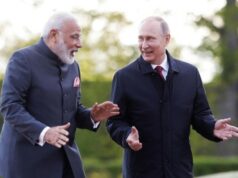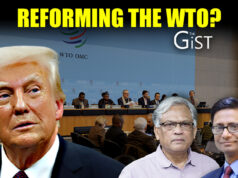Multi-alignment has become a buzzword in Indian foreign policy of late.
But what does it really mean? And how has it benefitted India?
Those were the questions we raised at a roundtable on the subject with three experts from diverse domains:
Dr Arpita Anant, an independent researcher who’s spent over two decades studying multilateralism, international relations, foreign policy and diplomacy, with stints at two well-known strategic think tanks;
Dr Jayant Dasgupta, who’s served as India’s permanent representative to the World Trade Organisation and as Secretary, Economic Advisory Council to the Prime Minister, among other senior positions;
Prof. Rajesh Rajagopalan, from the School of International Studies, JNU, and the author of books on the Indian army and counterinsurgency, and nuclear war in South Asia.
Explaining the difference between Non-alignment and Multi-alignment, Dr Anant said that “Non-alignment was about staying away from the military blocs of the Cold War era. But now we have decided that we will not have any military alliances with anyone, but we will align with anyone who has common interests, and from which we can benefit.”
How does this policy impact India economically, if at all?
Trade by itself is multi-aligned, says Dr Dasgupta, “because you cannot restrict your imports to a country or a particular group of countries only. We are not enjoying very harmonious relations with China, but our maximum imports are from China. You have to have relations with as many countries, whatever hues and political ideology they may have.”
But how difficult is it to ‘align’ with two nations that don’t see eye to eye?
“It is indeed very difficult, which is why this is not a strategy that is suitable for all countries at all times,” says Dr Rajagopalan. “And I would be somewhat sceptical of its utility for India at the present time,” he argues.
“It is somewhat similar to non-alignment that we followed during the cold war period, which was also a bipolar period,’ he said. “But at that point of time we could adopt that because we neither neighbours, nor particularly friends nor enemies of either the United States or the Soviet Union. So we could pick and choose between them…and we did. We went to the U.S. for help during the 1962 war (with China) took place, and subsequently in 1971 we went to the Soviets for help. And we got the best from both sides. We were the largest recipients of American economic assistance, and of course we got diplomatic and military support from the Soviets. So we got the best from both sides and we kind of played one off against the other…”
So why is it difficult now? And how has this policy helped or undermined India’s attempt to find its place at the world’s top table, in political, economic and military terms? How has it helped India navigate the increasingly complex geopolitical dynamics at play?
To know the answers to those questions and more, tune in and watch the discussion which examines almost every facet of this policy.
In a career spanning three decades and counting, Ramananda (Ram to his friends) has been the foreign editor of The Telegraph, Outlook Magazine and the New Indian Express. He helped set up rediff.com’s editorial operations in San Jose and New York, helmed sify.com, and was the founder editor of India.com.
His work has featured in national and international publications like the Al Jazeera Centre for Studies, Global Times and Ashahi Shimbun. But his one constant over all these years, he says, has been the attempt to understand rising India’s place in the world.
He can rustle up a mean salad, his oil-less pepper chicken is to die for, and all it takes is some beer and rhythm and blues to rock his soul.
Talk to him about foreign and strategic affairs, media, South Asia, China, and of course India.




